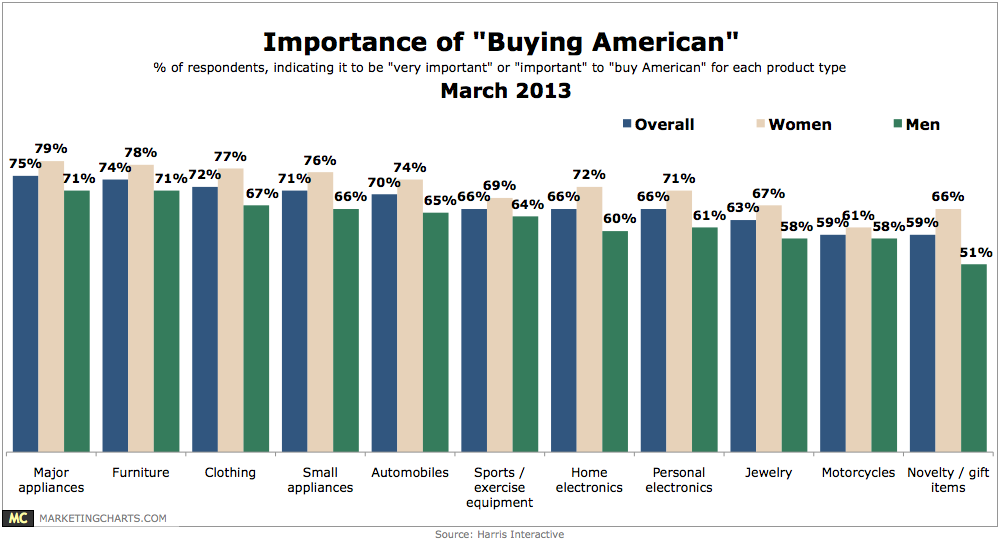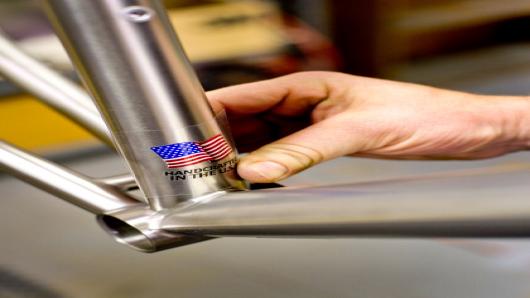- 11% more likely to consider “buying American” important when purchasing major appliances (79% vs. 71%);
- 10% more likely to consider it important for furniture purchases (78% vs. 71%);
- 15% more likely to place importance on this factor when buying clothing (77% vs. 67%);
- 14% more likely to find it important for car purchases (74% vs. 65%); and
- 20% more likely to consider it important when buying home electronics (72% vs. 60%).
On each count, 18-35-year-olds were significantly less likely than any other generation to believe that “buying American” is important to them.
The survey finds that the definition of what constitutes “buying American” isn’t universally agreed upon. Three-quarters agree that a product needs to be manufactured within the US for them to consider it “American,” while a slight majority believe that it needs to be made by an American company for them to consider it “American.” Close behind, 47% agree that a product needs to be made from parts produced in the US for them to consider it “American.”
As the researchers note, the company perceived by respondents to be the most “American” – Ford – increasingly has cars which include parts produced abroad. Other companies showing up in the most “American” list – such as GE and Levi Strauss – also outsource some of their operations overseas.
Regardless of the extent to which these companies’ products meet consumer definitions, “Made in America” packaging can influence consumers. A study released last year by Perception Research Services found that about 8 in 10 shoppers notice “Made in the USA” claims in packaging, and about three-quarters of those believe that such claims make them more likely to buy the product.
According to the Harris survey results, the most commonly-cited important reasons for “buying American” are to keep jobs in America (90%), to support American companies (87%), and due to quality (83%) and safety (82%) concerns with products assembled outside of the US.
About the Data: The Harris Poll was conducted online within the United States between December 12 and 18, 2012 among 2,176 adults (aged 18 and over). Figures for age, sex, race/ethnicity, education, region and household income were weighted where necessary to bring them into line with their actual proportions in the population. Propensity score weighting was also used to adjust for respondents’ propensity to be online.
Data for the “What company do you consider to be most ‘American’” question was conducted online within the United States between January 2 and 4, 2012 among 2,126 adults (aged 18 and over). Figures for age, sex, race/ethnicity, education, region and household income were weighted where necessary to bring them into line with their actual proportions in the population. Propensity score weighting was also used to adjust for respondents’ propensity to be online.























